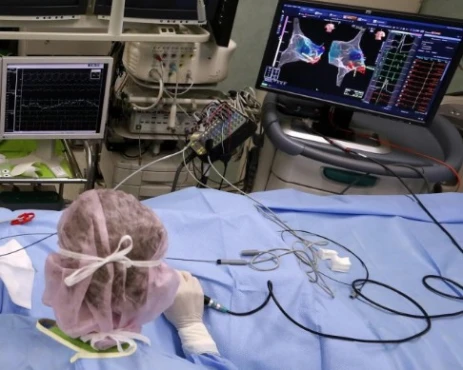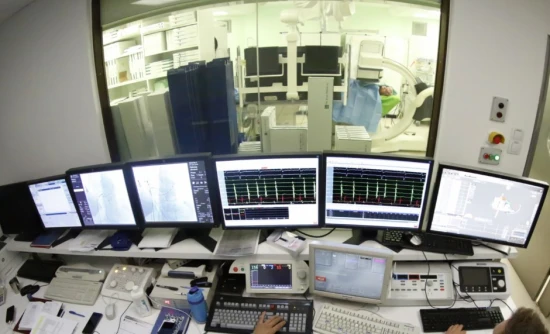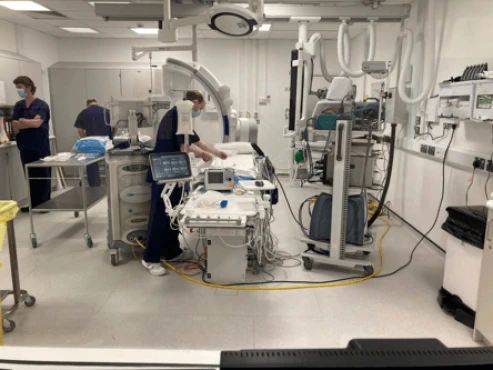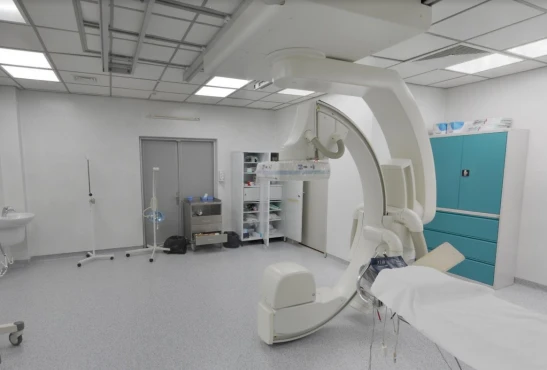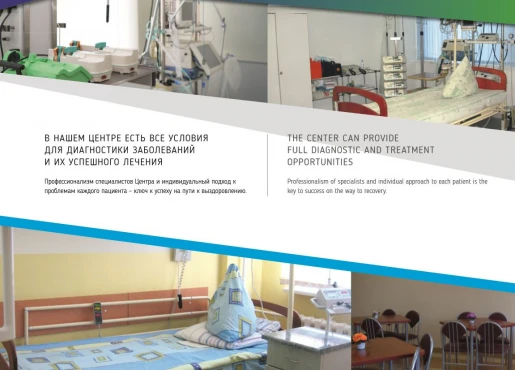Cardiovascular disease and diabetes mellitus
Diabetes mellitus (DM) is a group of diseases that is associated with an increase in the concentration of glucose in the blood (hyperglycemia) and occurs as a result of insufficient release of insulin or a violation of its action on tissues.
There are several types of diabetes mellitus. The most common type 1 and 2 diabetes mellitus. T1DM manifests itself in childhood and immediately needs insulin therapy. T2DM most often affects adults over 45 years of age. Therapy for this type of disease begins with antidiabetic drugs and only after a long time from the onset of the disease. T2DM is more common than T1DM.
Chronic hyperglycemia leads to complications from the heart and blood vessels (diabetic micro- and macroangiopathy in diabetes mellitus), kidney, eyes and nervous system (for example, signs of cerebral microangiopathy). Below we will analyze in detail the features of its effect on the cardiovascular system.
Prevalence of diabetes mellitus worldwide
Thanks to improvements in diagnostic and treatment methods, the incidence and mortality from cardiovascular disease in the population has dropped significantly over the past decades. Similar tendencies were observed in diabetics. However, despite these improvements, diabetes continues to be the cause of cardiovascular morbidity and mortality in all age groups and among both sexes.
An aging population and a global epidemic of obesity due to poor diet and sedentary lifestyles have led to an increase in the number of patients with diabetes mellitus (DM) worldwide. Since the 1980s, the global prevalence of the disease has more than doubled in men and 60% in women.
6.4% of the world's population in 2010 had diabetes mellitus. The number of people with the disease is expected to grow to nearly 600 million in the next two decades worldwide.
The prevalence of T2DM increases with age in both sexes, but men get sick more often than women. Pathology has a significant relationship with ethnicity and is most common among Negroids and Mexican Americans.
Diabetes mellitus and heart disease link
Diabetes mellitus is recognized as a major risk factor for cardiovascular disease (CVD) and is associated with other causes of this pathology, such as hyperlipidemia (increased blood fat levels), hypertension (increased blood pressure), and obesity (diabetes comorbidity).
A large study conducted between 1997 and 2002 showed that diabetic patients requiring anti-hypoglycemic drugs have a cardiovascular risk equivalent to non-diabetic patients with previous myocardial infarction (MI).
Thus, diabetes increases the risk of developing the following pathologies:
- ischemic heart disease;
- heart failure;
- atrial fibrillation;
- stroke, etc.
Cardiovascular disease remains the leading cause of death in people with diabetes. More than 68% of diabetics over 65 die from them. On average, people with diabetes die several years earlier than patients with CVD but not diabetes mellitus.
The strong link between diabetes and CVD has been a major topic of interest among clinicians.
Etiology and pathophysiology of cardiovascular diseases in diabetes mellitus
Research in recent decades has shed light on the link between diabetes and CVD. A complex interaction between multiple biological mechanisms underlies the increased risk of CVD in patients with diabetes.
These mechanisms can be classified into six main groups:
- Damage to body tissues due to violations of the concentration of glucose in the blood.
Insulin resistance is associated with the presence and progression of coronary artery disease (CAD), which significantly affects the prognosis of heart failure (HF). Also, elevated glucose levels play an important role in the development of atherosclerosis and microvascular complications in patients with T2DM. - The presence of common mechanisms for the development of diabetes and CVD.
The renin-angiotensin-aldosterone system (RAAS) is a cascade of enzymes (biologically active molecules) that is involved in a large number of physiological mechanisms in the human body. There is growing evidence that over-activation of the RAAS is a link between obesity, diabetes mellitus and cardiovascular disease. RAAS blockade is an important component of the treatment of arterial hypertension and heart failure (HF). Moreover, thanks to it, there is an increase in insulin secretion by the pancreas and an improvement in tissue sensitivity to insulin.
Obesity-induced inflammation is also a central component of the link between obesity, T2DM, coronary artery disease, and heart failure. Adipose tissue in overweight people attracts immune cells that trigger chronic inflammation. The latter contributes to the development of T2DM, atherosclerosis, ischemic heart disease and heart failure.
Also, recent studies have shown a significant effect of vasopressin on the development of diabetes and CVD. This hormone normally constricts blood vessels and increases blood pressure. The vasopressin system may in the future be a new therapeutic target for the prevention of heart disease in patients with diabetes. - Contribution of other CVD risk factors (such as hypertension and hyperlipidemia) that usually coexist with diabetes.
Adipose tissue surrounding the heart (pericardial adipose tissue, PAT) is an independent risk factor for left ventricular hypertrophy (enlargement), coronary artery disease, heart failure, atrial fibrillation, and cardiovascular mortality.
Individuals with prediabetes and diabetes mellitus have a significantly higher PAT volume than those with normal blood glucose levels. There are several distinct mechanisms that usually occur due to excess PAT. These include: damage to the inner layer of blood vessels, fatty infiltration of the myocardium (saturation of the heart muscle with fat), oxidative stress, inflammatory reactions.
Arterial hypertension (AH) also affects the majority of patients with diabetes. Its prevalence varies with age, gender, ethnicity, and type of diabetes. The coexistence of hypertension and diabetes mellitus, especially with uncontrolled blood pressure, dramatically increases cardiovascular risk.
Dyslipidemia (an imbalance in fat) is a major risk factor for cardiovascular disease in patients with diabetes. The lipid profile (fat concentration) in patients with well-controlled type 1 diabetes usually does not differ significantly from the lipid profile of the general population. However, patients with T2DM and uncontrolled T1DM usually have elevated triglycerides, decreased high-density lipoprotein cholesterol (HDL-C, "good cholesterol"), and increased low-density lipoprotein cholesterol (LDL, "bad cholesterol"). - Genetic predisposition.
Scientists have studied several genetic factors that affect the progression and prognosis of CVD in diabetes. Thus, variations in the genotypes of haptoglobin are well established genetic risk factors for cardiovascular disease in patients with diabetes. Haptoglobin is an acute phase protein (involved in inflammatory reactions) that binds to free hemoglobin and prevents oxidative tissue damage caused by it. - Impact of epigenetic factors.
Epigenetic mechanisms affect the activity of human genes. They carry out the connection between the influence of the environment and the activity of hereditary traits. Epigenetic changes in cardiovascular cells caused by chronic hyperglycemia, inflammation and oxidative stress contribute significantly to the increased risk of vascular dysfunction and cardiovascular disease in patients with diabetes. - Apoptosis.
Apoptosis is a process of programmed cell death. Studies have shown that in people with diabetes, compared with people without diabetes, apoptosis of the cells of the heart and blood vessels increases several times.
Thus, diabetes and heart disease are closely related. Often the doctor is faced with the task of not only treating one of these diseases, but also reducing the risks of a second pathology.
References:
- Oktay, A. A., Akturk, H. K., Esenboğa, K., Javed, F., Polin, N. M., & Jahangir, E. (2018). Pathophysiology and Prevention of Heart Disease in Diabetes Mellitus. Current Problems in Cardiology, 43(3), 68–110. doi:10.1016/j.cpcardiol.2017.05.0.
- Harrison`s Principles of Internal Medicine 19/E (Vol.1). Dennis Kasper, Anthony Fauci, Stephen Hauseret all. McGraw-HillEducation 2015 ISBN: 0071802134 ISBN-13(EAN): 9780071802130.
- Interna szczeklika - duży podręcznik. Medycyna praktyczna. 2021. ISBN 9788374306522.








































